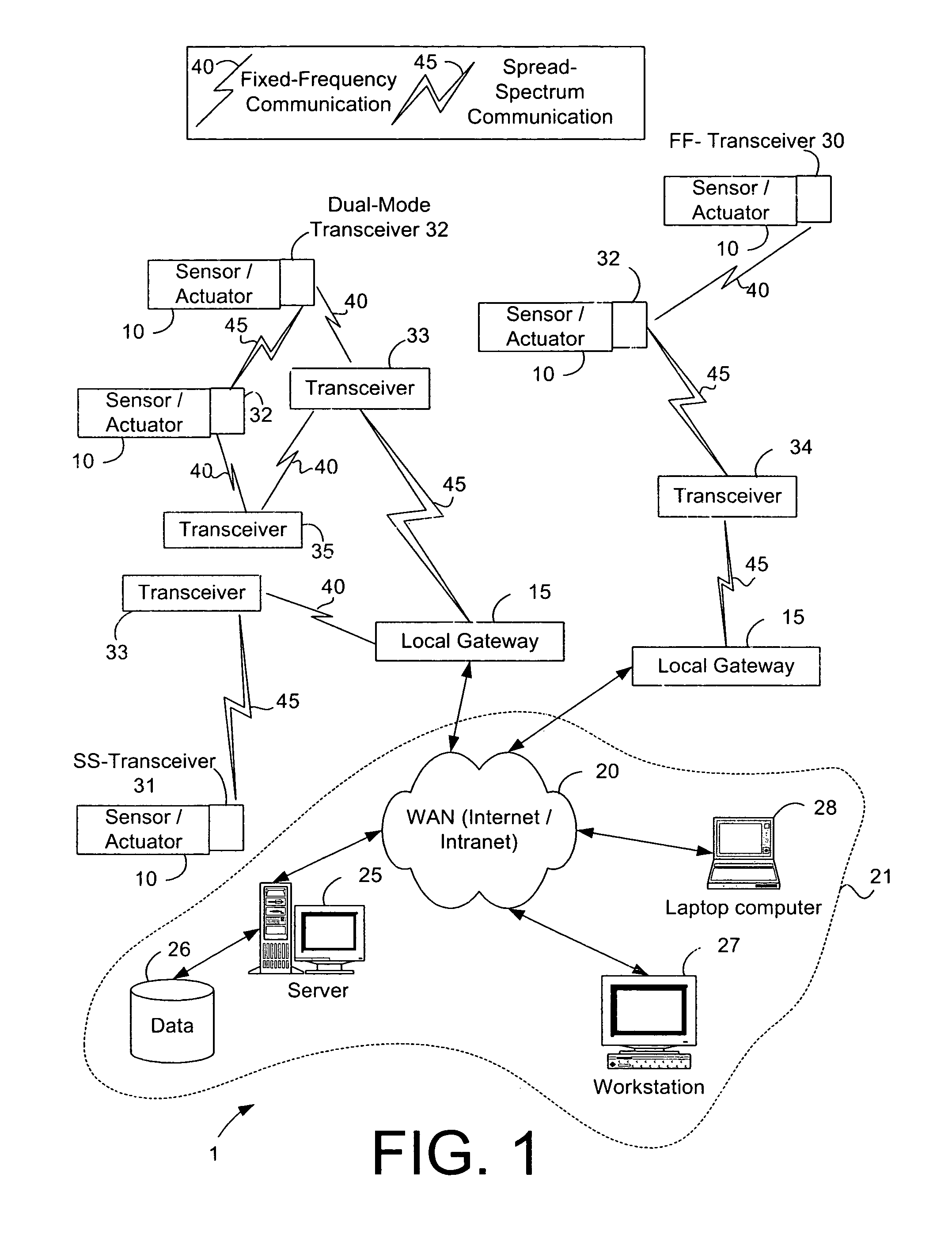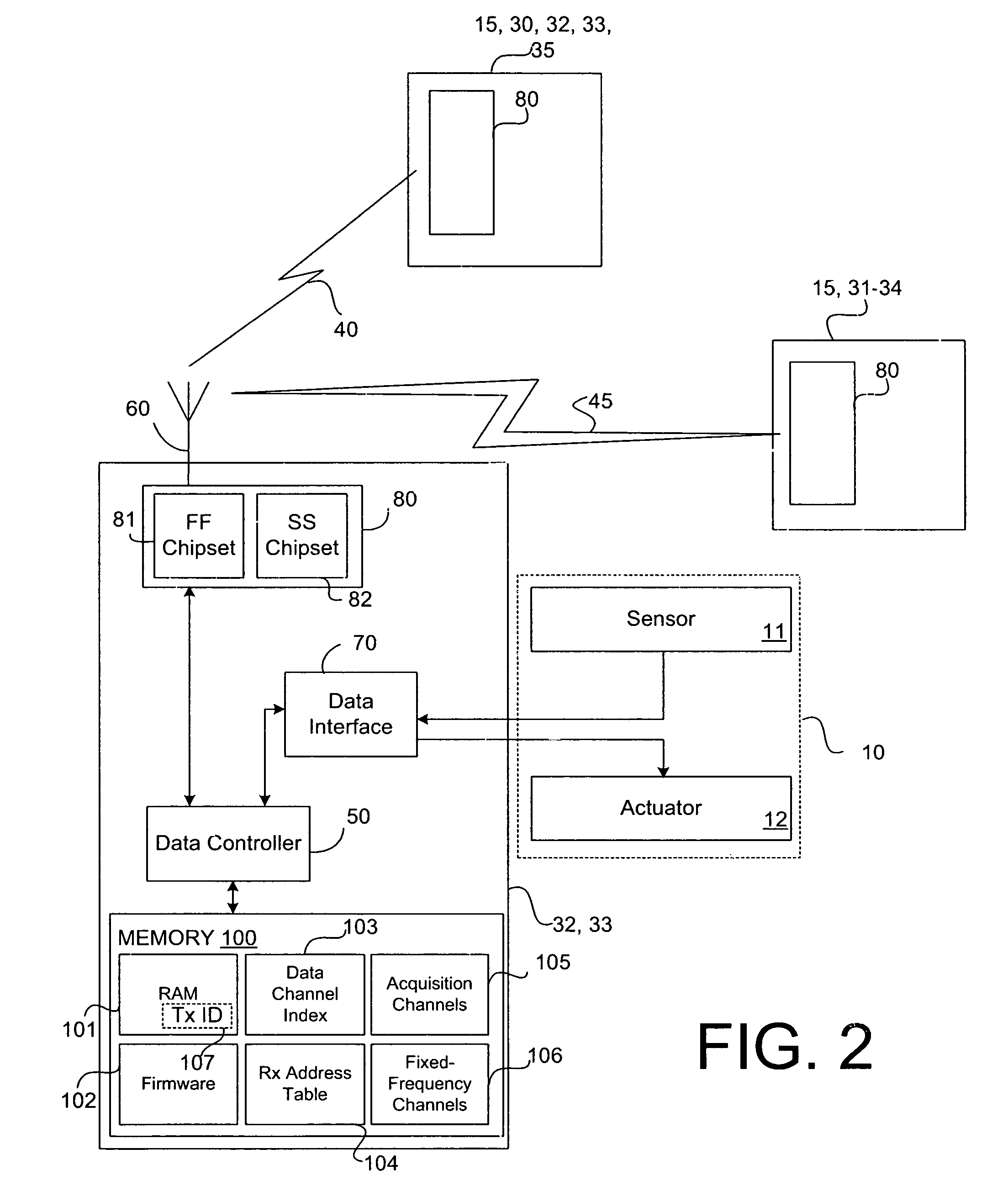Method for communicating in dual-modes
a communication method and dual-mode technology, applied in the direction of multiple-modulation transmitter/receiver arrangement, electrical equipment, connection management, etc., can solve the problems of low-power, single-channel communication protocol, limited range, etc., and achieve low-power, shorter communication range, and limited range.
- Summary
- Abstract
- Description
- Claims
- Application Information
AI Technical Summary
Benefits of technology
Problems solved by technology
Method used
Image
Examples
Embodiment Construction
[0018]Embodiments illustrated in further detail below illustrate various systems, methods, devices, and programs for communicating in a dual-mode communication protocol. A first communication protocol may generally be considered a fixed-frequency communication protocol and a second communication protocol may generally be considered a spread-spectrum communication protocol.
[0019]An embodiment of a transceiver communicating in a fixed-frequency communication protocol is generally configured to communicate a communication packet at a single frequency channel, with a first modulation scheme, at a given radiating power level.
[0020]An embodiment of a transceiver communicating in a spread-spectrum communication protocol is generally configured to communicate a first portion of a communication packet at a first frequency channel, and then communicate a second portion of the communication packet at a second frequency channel. The spread-spectrum communication protocol may employ a second mod...
PUM
 Login to View More
Login to View More Abstract
Description
Claims
Application Information
 Login to View More
Login to View More - R&D
- Intellectual Property
- Life Sciences
- Materials
- Tech Scout
- Unparalleled Data Quality
- Higher Quality Content
- 60% Fewer Hallucinations
Browse by: Latest US Patents, China's latest patents, Technical Efficacy Thesaurus, Application Domain, Technology Topic, Popular Technical Reports.
© 2025 PatSnap. All rights reserved.Legal|Privacy policy|Modern Slavery Act Transparency Statement|Sitemap|About US| Contact US: help@patsnap.com



